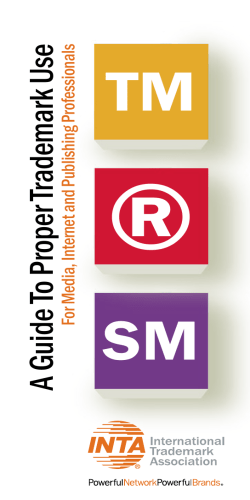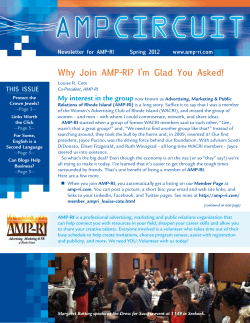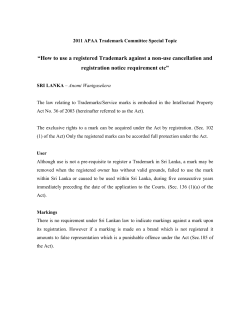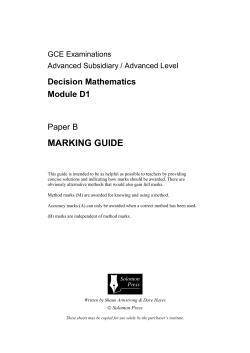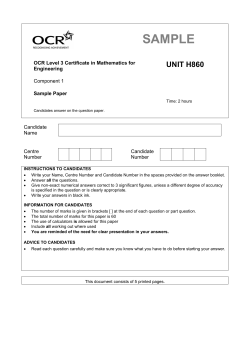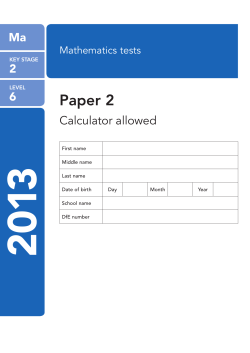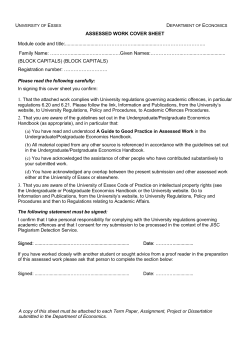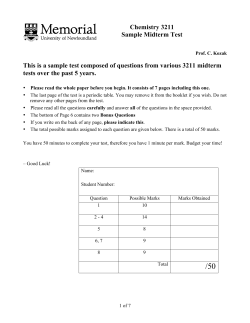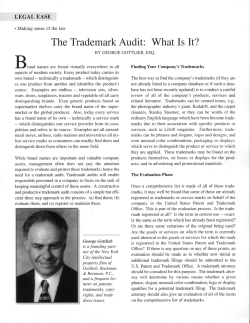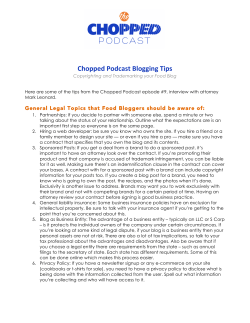
(a.k.a. How to Keep Peace With Your Marketing Department)
1/20/2012 (a.k.a. How to Keep Peace With Your Marketing Department) Jennifer L. Barry LATHAM & WATKINS LLP January 24, 2012 Trademark: a word, phrase, symbol, logo or design used to identify the source of goods and distinguish them from goods manufactured by others. • Words, names, symbols, devices, pictures, designs, numerals, abbreviations, acronyms, slogans, phrase, fragrance, color, a sound combination, label, container, package, product shape, building shape, telephone number, geographical name, grade designation, or any other combination. Service mark: essentially the same as a trademark, but relates to services, such as a restaurant, a bank, or a law firm. 1 1/20/2012 “A man is only as good as his name.” Trademarks are one of the most valuable assets of a company. Consumer brand recognition and recognition of product lines. Goodwill Creativity Communication Clearance Continuous Use Consistency 2 1/20/2012 Original and creative “Strength” = protection DISTINCTIVENESS is key Five “classes” of marks, from strongest (very good at distinguishing one source of that product from all others) to weakest (not very good at distinguishing one source of that product from all others): • Fanciful • Arbitrary • Suggestive • Descriptive • Generic 3 1/20/2012 Fanciful marks are marks that have no meaning in ordinary language usage – it is a word that has been conjured up to be a trademark. • KODAK for film • EXXON for oil/gas • REEBOK for shoes • XEROX for copiers Arbitrary marks are marks where common words are applied in an unfamiliar manner. • CAMEL for cigarettes • IVORY for soap • APPLE for computers A suggestive mark is one for which a “consumer must use imagination . . . to understand the mark’s significance . . . the mark does not describe the product’s features, but suggests them.” • • • • MICROSOFT for computer software products SKINVISIBLE for transparent medical adhesive tape VERICHECK for financial transaction verification services HABITAT for home furnishings Descriptive marks directly convey some quality, characteristic, purpose, component or other property of the product. • • • • RAPID RESPONSE for emergency medical services PUBLIC STORAGE for storage facilities open to the public HONEY-BAKED HAM for hams SPEEDY PRINT for copy services. 4 1/20/2012 A generic term is the common name for a type of product made my many companies. A generic term cannot be a trademark. • LITE for low-calorie beer • URGENT CARE for medical services • YOU HAVE MAIL for phrase to alert of an email arrival Trademarks can become “genericized” • ASPIRIN • THERMOS • CELLOPHANE It is very important for the marketing department to communicate with its legal team when creating a new brand. The legal team can help marketing accomplish its goals. Marketing department should keep in touch with the legal team – if the marketing department decides to stop using a brand, or decides to go in a different direction, they must alert the legal team. Communication between the marketing department and the legal team is key to protect and promote brands. 5 1/20/2012 Make sure that the mark can be “registered” with the United States Patent & Trademark Office to ensure greater legal protection. The following can be registered as a trademark: • • • • • • • Words/combinations of words Logos Colors Fragrances Three-Dimensional Shapes Sounds Names The following subject matters cannot be registered as a trademark: • Marks that consist of immoral, deceptive or • • • • scandalous matter; Flag, coat of arms or other insignia of the United States, any State or any foreign nation; Name, portrait or signature of a living person unless that person gives written consent; Name, portrait or signature of a deceased President of the United States during the life of a surviving widow, if any, unless with that widow’s written consent; or Generic marks. 6 1/20/2012 Conduct a U.S. Full Search to make sure no one else is using the mark. • If someone is already using a mark (a “senior user”) that is similar to the mark you are considering, be aware that the following factors are evaluated in determining whether the two marks are likely to cause confusion in the marketplace (which could lead to your use of the mark as trademark infringement). Strength of the senior mark; Degree of similarity between the senior mark and your proposed mark; Proximity of the products and services and the likelihood that the senior user could reasonably be expected to expand into substantially similar products The junior user’s “good faith” in adopting the mark Evidence of actual confusion; Sophistication of the buyers; and Whether the products are advertised/marketed/distributed through the same channels. Use The Mark Continuously • Save samples of use Keep track of how the mark was created, what it means, why it was chosen and date of first use • Save (off and online) catalogs • Create use files Risks of Non-Use • Abandonment of mark • Cancellation of mark • False affidavits / declarations 7 1/20/2012 Although this seminar presentation may provide information concerning potential legal issues, it is not a substitute for legal advice from qualified counsel. This presentation is not created or designed to address the unique facts or circumstances that may arise in any specific instance. You should not, nor are you authorized to, rely on this content as a source of legal advice. This seminar material does not create any attorney-client relationship between you and Latham & Watkins LLP. Jennifer L. Barry Partner Latham & Watkins LLP 600 West Broadway, Suite 1800 San Diego, CA 92101 (619) 238-3024 jennifer.barry@lw.com 8
© Copyright 2025

